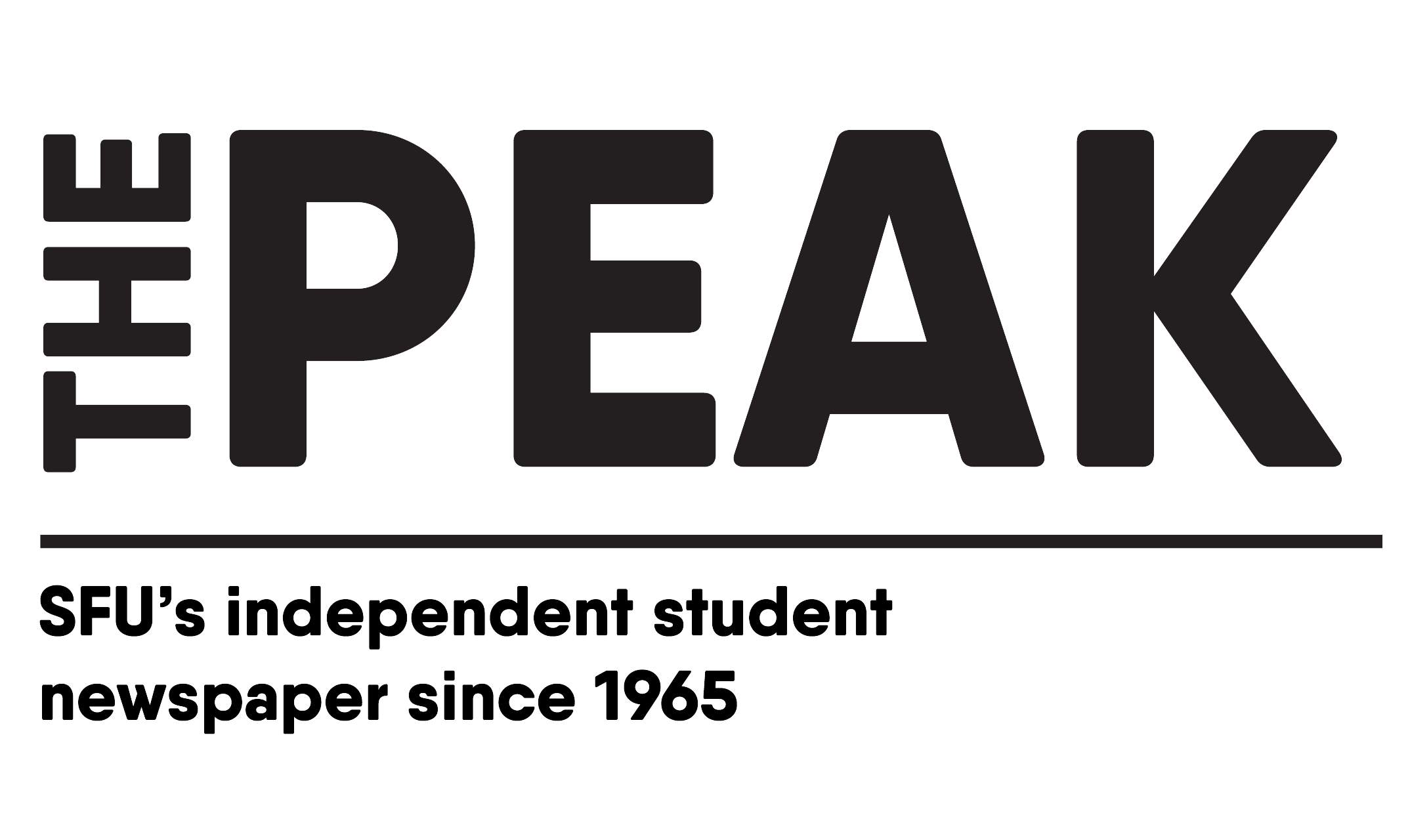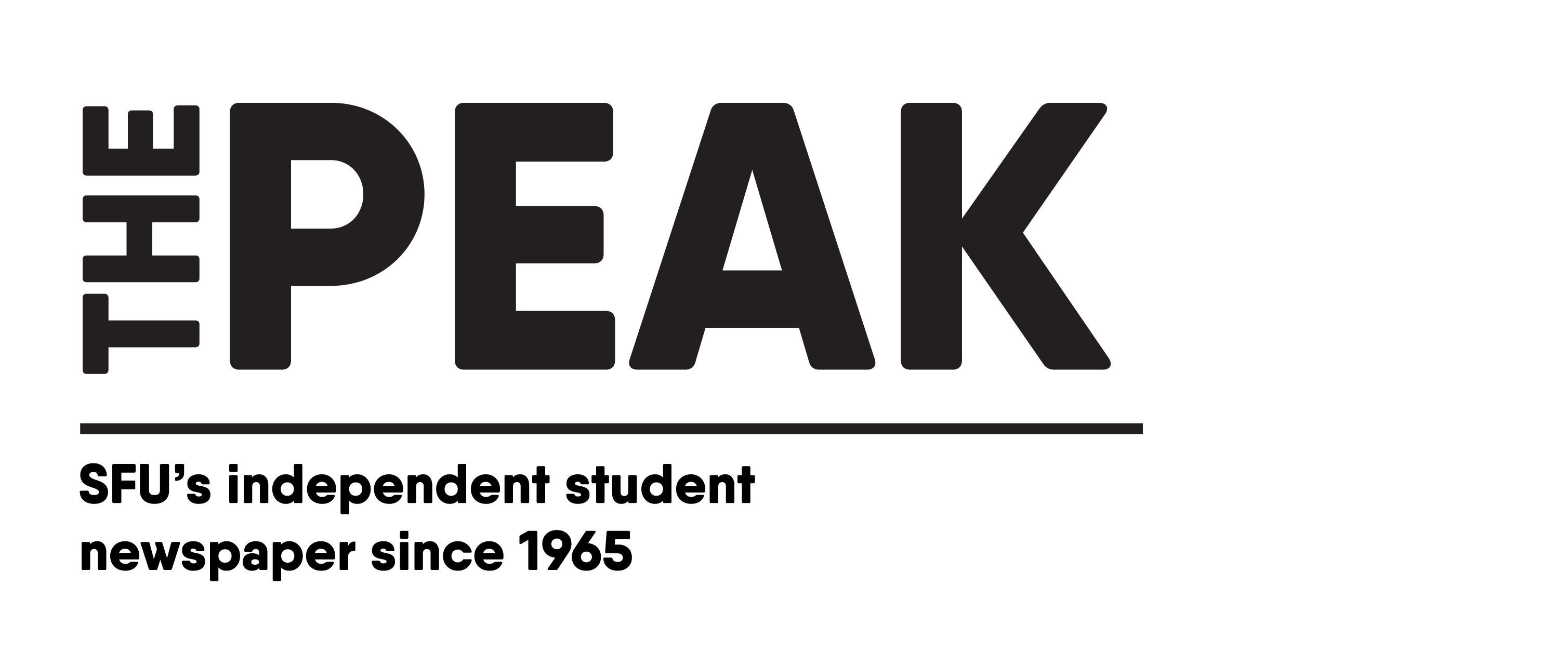By: Sara Wong, Arts & Culture Editor
un/settled was a 240 foot installation celebrating Black womanhood, produced by Chantal Gibson and Dr. Otoniya J. Okot Bitek at the SFU Belzberg Library. Although it is no longer on display, the impact it had was profound. Inside the library, a book exhibit created by Fall 2021 publishing students showed work “based on, or in conversation with, un/settled.”
“It’s a proposition for someone who wants to reflect on what it means to be unsettled. Because we should all be unsettled,” explained Dr. Okot Bitek in The Lyre. Using a variety of mediums, from poetry to guidebooks, the print and digital books class (PUB 331) aimed to further dialogue on Blackness in public space.
As Peak contributor Linda Kanyamuna said about un/settled, “It’s important to recognize the urgency of solidarity in the scope of racial justice, and that standing in solidarity for Black lives is a communal effort.” And like Gibson noted in The Lyre, “The facelessness of the portraits created space [ . . . ] for others to identify with and find their own meaning in the work.”
In an interview with The Peak, some of the PUB 331 students discussed their book designs and what they took away from this assignment.
Rowina Chan — The Guide to Allyship
“Designing The Guide to Allyship was my response in sharing a how-to on becoming a compassionate and empathetic friend, family member, coworker, and so forth,” Chan explained. “The concept of community was something that resonated with me.”
Her pocket guide features open-source text about supporting communities of colour, which was created by Jamaican American writer and designer Amélie Lamont. It also includes illustrations by Latinx digital artist Pablo Stanley, which are accentuated by the die-cut cover. This feature allowed Chan to play with the interactiveness of her book, which was meant to reach a wide audience.
The die cuts were done by hand in order to stay on budget — a decision that made production challenging, yet satisfying at the same time. “My professor [ . . . ] was very generous and patient in offering her Cricut to do the die cuts, and it was truly a rewarding learning experience for both of us when it was our first time experimenting with the machine,” Chan said.
“The Guide to Allyship would not have come to fruition without the incredible help of the teaching team, Mauve Pagé and Erin Chan,” she continued. “The technicalities with file formatting and design layout for printing are something I will carry with me for future projects.”
Melissa Ho — SFU Library resource book
Did you know SFU libraries are open to the general public as well as students? After discovering this, Ho decided the concept of her book would be to highlight the services these libraries offered, especially as they work to amplify BIPOC voices.
“Through interviews with Leanna Jantzi, head librarian of SFU Fraser Library, and Megan Sorenson, librarian for SFU publishing, I got to better understand the role of SFU in communities and how libraries have shifted from being exclusive places for the privileged to what they are today,” she said.
“Growing up, buying new books was tough for my family due to financial reasons,” Ho added. “I wish I’d known the SFU Library was open to the public before I attended SFU, because I would’ve flipped through all the design books you couldn’t find at public libraries.”
Due to “personal matters regarding mental health,” Ho produced a digital book instead. “Pagé was extremely compassionate and understanding to accept my book beyond the due date,” Ho said. Though she did not get to print, the extra time allowed her to produce something she was genuinely proud of.
Alyssa Lalani — Detangled Roots
“The concept of my publication was to embody the beauty of Black hair in an art book while educating readers on issues of hair-based discrimination,” Lalani said. “I was especially inspired after reading Linda Kanyamuna’s article in The Peak.”
Lalani’s work combines scribbly line art illustrations and expressive typography to represent natural hair. Though the design is quirky, a great deal of thought went into each element. For instance, the typeface — VTC Bayard — draws inspiration from 1963 March on Washington for Jobs and Freedom signs. This connects to the book’s theme of unravelling discrimination’s roots.
“The class went beyond mere graphic design principles and forced you to think about the story you are trying to tell,” Lalani said. “Mauve Pagé is an extremely talented book designer and I learned a lot from being in her class and having her critique my work.”
Knowing her project would be on display challenged Lalani to do something new with the book’s materiality. She ended up using coptic stitching for the binding, which added texture and mirrored Gibson’s technique of braiding thread in un/settled. “It was a little surreal seeing my book on the SFU publishing Instagram. I remember thinking to myself ‘wow, I really made that and it’s out in the world now,’” said Lalani.
Stefanie Peng — un/settled poetry book
Wanting to directly honour the source material, Peng opted to create a poetry book with Dr. Okot Bitek’s work. “I’m not a Black woman, so I wanted to use the words written by a Black woman to convey the message of un/settled rather than using my own,” Peng said. Aside from highlighting Dr. Okot Bitek’s poetry, the book features greyscale photographs of nature and Black skin “to emphasize and spotlight the idea of Blackness.”
Peng also emphasized how personal these projects were. “This work had more meaning and weight than anything I’d ever worked on in school. It was simultaneously great and pressuring,” she said. During the process of designing her book, Peng sought to answer a variety of question prompts such as, “Why do I want it to look or feel this way?” and “What is its place in this world?” To her, it was important that what she showcased was evocative.
“Having my work up in the library for everyone to see in connection to the un/settled exhibit makes my work feel tangible and important, like the messages I weaved into it have some direction to go,” she said.




